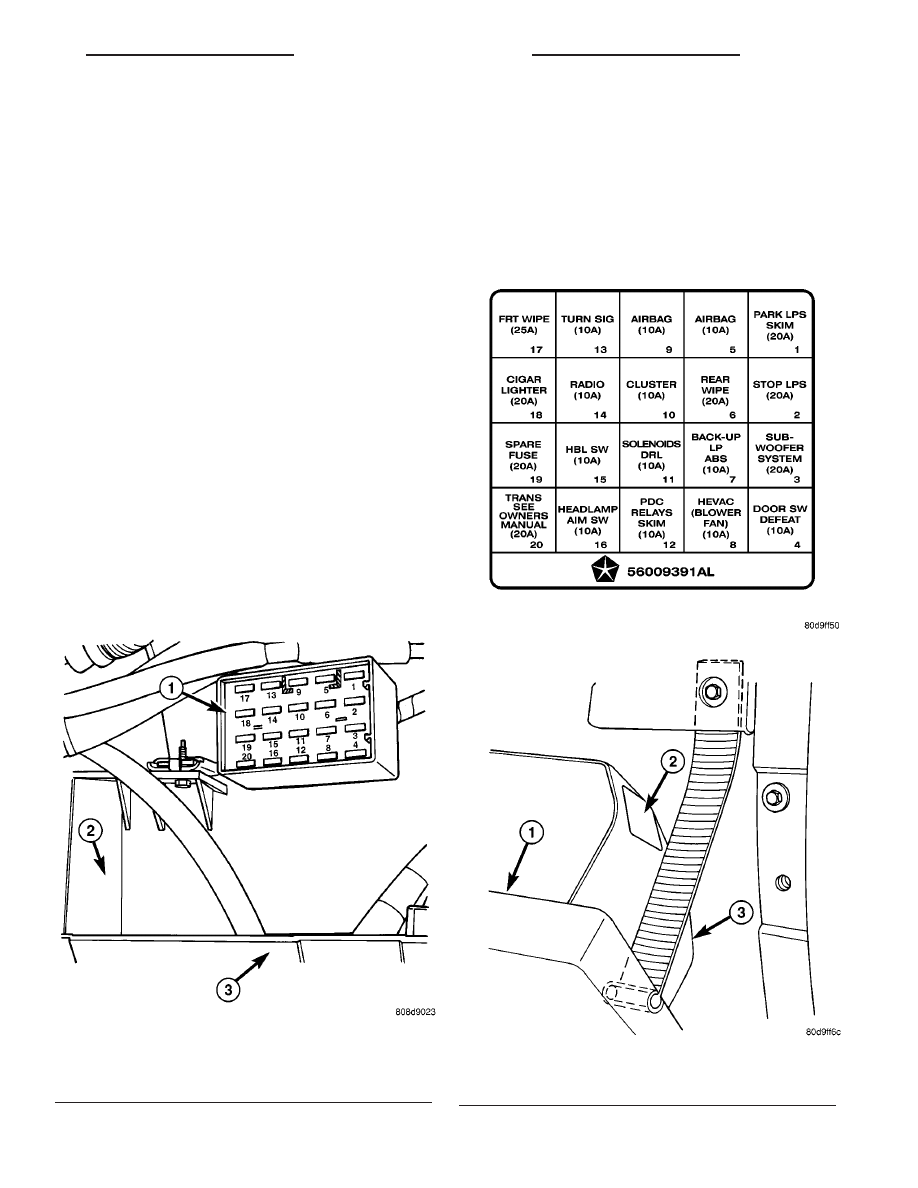Jeep Wrangler TJ. Manual - part 418

shell. If OK, replace the faulty cigar lighter knob and
element. If not OK, go to Step 3.
(3) Turn the ignition switch to the Off position.
Disconnect and isolate the battery negative cable.
Remove the instrument panel accessory switch bezel.
Check for continuity between the ground circuit cav-
ity #3 of the cigar lighter wire harness connector and
a good ground. There should be continuity. If OK, go
to Step 4. If not OK, repair the open ground circuit to
ground as required.
(4) Connect the battery negative cable. Turn the
ignition switch to the Accessory or On positions.
Check for battery voltage at cavity #1 of the cigar
lighter wire harness connector. If OK, replace the
faulty accessory switch bezel unit. If not OK, check
for blown fuse in the fuseblock (f19) or in the PDC
(f13). If fuse is blown check for short circuit. Repair
the circuit as required and replace blown fuse.
FUSE BLOCK
DESCRIPTION
An electrical fuseblock module is mounted on the
dash panel in the passenger compartment of the
vehicle (Fig. 1). The fuseblock module serves to dis-
tribute electrical current to many of the accessory
systems in the vehicle. The fuseblock module houses
up to twenty blade-type mini fuses.
The molded plastic fuseblock module housing has
an integral mounting bracket that is secured with
two screws to a bracket welded on the dash panel
just above the heater and air conditioner housing.
The glove box is rolled down from the instrument
panel for service access of the fuseblock module
fuses. An adhesive-backed fuse layout map (Fig. 2)is
located on the outside of the glove box bin (Fig. 3) to
ensure proper fuse identification.
Fig. 1 Fuseblock Module Location
1 - FUSE BLOCK
2 - HEATER CASE
3 - GLOVE BOX OPENING
Fig. 2 Fuseblock Label
Fig. 3 Fuseblock Label Location
1 - GLOVE BOX DOOR
2 - FUSEBLOCK LABEL
3 - GLOVE BOX BIN
TJ
8W-97 POWER DISTRIBUTION
8W - 97 - 3
CIGAR LIGHTER OUTLET (Continued)